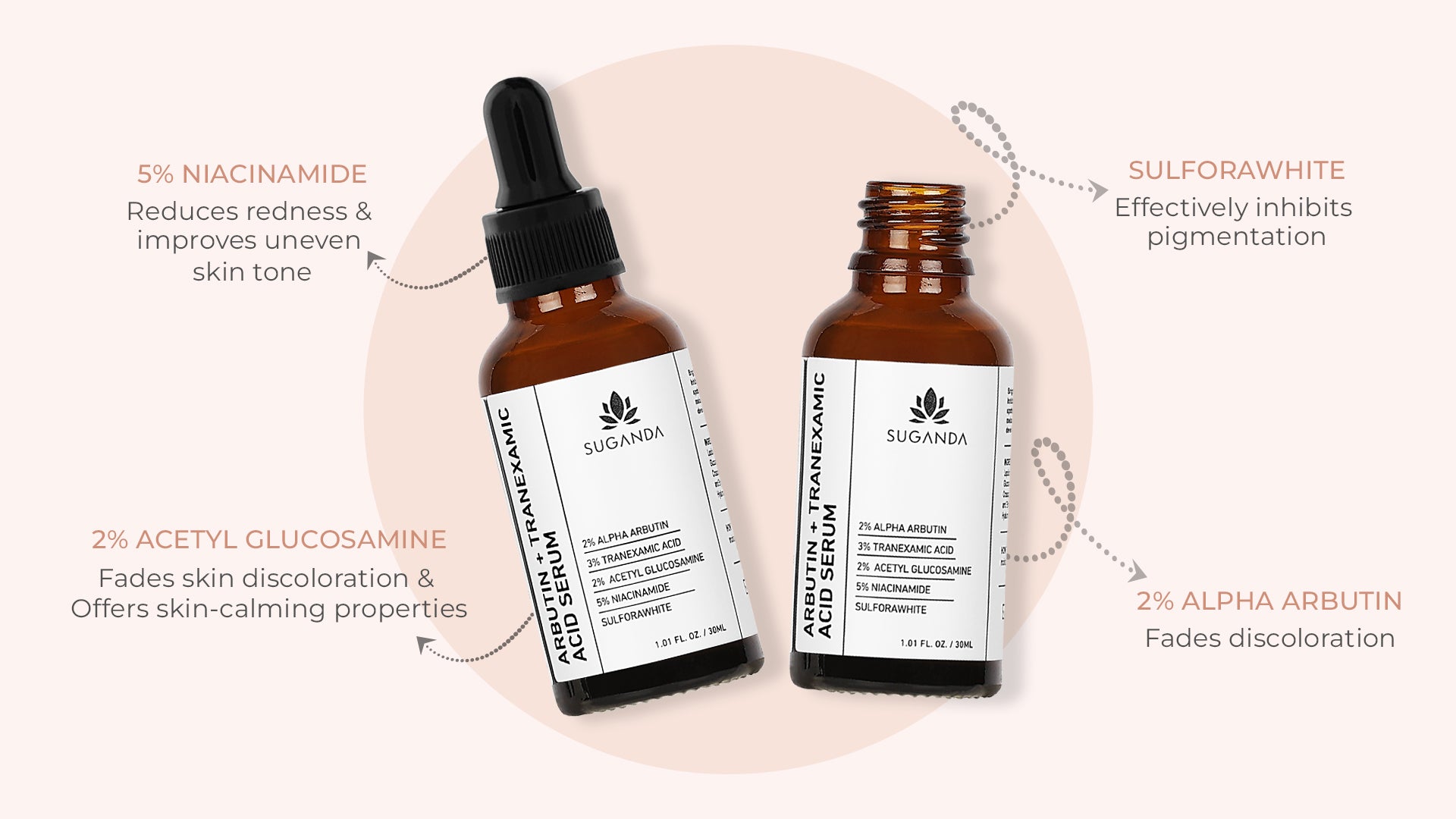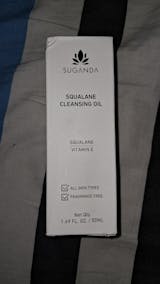Ageing is a natural process, but the signs of premature ageing aren’t natural. While some people feel concerned about fine lines and wrinkles, a lot more get worried about dark spots, uneven skin tone, and hyperpigmentation.
Brands have been working hard to tackle the intensity of skin issues like dark spots, uneven skin tone, and hyperpigmentation.
They've concocted brightening skincare products loaded with ingredients like vitamin C, kojic acid, and licorice that promise noticeable results for all skin types.
However, those with sensitive skin know all too well the struggle of trying out new brightening routines.
Ingredients like vitamin C, liquorice, kojic acid, etc., are all excellent brightening agents, but alpha arbutin tops them all. Arbutin is a compound that is naturally produced from different plant sources, like mulberry, bearberry, and pomegranate, and it is found to be one of the most effective skin-brightening agents.
Arbutin Vs Alpha Arbutin?
Arbutin and alpha arbutin are two different names for the same ingredient, and these terms are often used interchangeably. In fact, the raw compound is called arbutin, and its chemically synthesized version is known as alpha arbutin.
Besides, another variant of arbutin is available in the market, known as beta arbutin. However, dermatologists advise that you should completely ignore this variant as alpha arbutin is ten times more effective than the latter.
What are the benefits of using alpha arbutin?
Skincare products including alpha arbutin have become immensely popular off-late. People have started vouching for this ingredient because of its multiple benefits. Let us take a look at the advantages of using alpha-arbutin daily.
Reduces dark spots and hyperpigmentation
Alpha arbutin limits the production of melanin on your skin. Dermatologists suggest using it daily to see results within a few weeks. With regular application, this active ingredient can fade away dark patches and pigmentation on your skin. Furthermore, people find this ingredient useful in combating ageing signs, such as acne scars, age spots, post-acne redness, and freckles.
Evens skin tone
Alpha arbutin starts targeting the tyrosinase enzyme, which is responsible for melanin production in the skin. It focuses on inhibiting tyrosinase activity, which reduces melanin production. As a result, the skin gets lighter and looks more even.
Safe ingredient
There are a lot of skin-lightening agents that produce results, but they also get harsh on your skin, especially sensitive skin. Alpha arbutin, on the other hand, is an organic compound produced naturally, which stays calm on your skin and doesn’t leave any skin side effects. However, it is not safe to use by pregnant or lactating women
What are the dos and don’ts of layering with alpha arbutin?
Now, let’s get to the core of the topic, and discuss the things you need to follow while layering your skincare products. So, let us first read the ingredients that you can normally layer with alpha arbutin.
Alpha arbutin goes well with vitamin C, as it is the powerhouse of antioxidants. Vitamin C neutralizes the free radicals in your skin, and both these ingredients work in the same direction, producing great results in less time.
This ingredient is a water-based lightweight compound that matches the texture of alpha arbutin. It promotes collagen production, making your skin look firmer, healthier, and more glowing. Niacinamide boosts the cell-turnover rate, which works in favor of alpha arbutin. You can also choose a product that contains both arbutin & Niacinamide as they are synergistic in fading the pigmentation and improving skin health.
Hyaluronic acid
Often dry skin aggravates the intensity of pigmentation. Dry skin leads to irritation & inflammation which in turn triggers melanin production. This active ingredient has an excellent skin-hydrating property, which provides the necessary moisture to the skin. Hyaluronic acid prepares your skin to absorb alpha-arbutin more effectively, letting it produce better results.
However, overall skin health is important when you start treating Hyperpigmentation. If you have mild pigmentation such as dark spots & Tan, you should start with the golden trio " Vitamin C, Niacinamide, Retinol " rather than directly opting for strong tyrosinase inhibitors like Arbutin. This trio will ensure your overall skin health and prevent future occurrences of pigmentation.

If you have stubborn pigmentation such as melasma, age spots & stubborn dark patches, start your pigmentation routine with arbutin-infused pigmentation serums & Retinol in your PM routine. This duo will help with your stubborn pigmentation.
Things to avoid while layering alpha arbutin
Layering different active ingredients can deliver good results on your skin, but if you don’t do it mindfully, you might invite skin issues. The experts suggest that you should not pick more than three active ingredients together, as it will lead to skin concerns. Besides, even with two ingredients, you need to be careful.
Therefore, it is advised that you consult your dermatologist to get the best results.
References:
https://doi.org/10.1271/bbb.59.143
https://www.ncbi.nlm.nih.gov/pmc/articles/PMC3663177/
https://www.ncbi.nlm.nih.gov/pmc/articles/PMC5426667/
https://pubmed.ncbi.nlm.nih.gov/16029679/








 +91 9347578980
+91 9347578980

